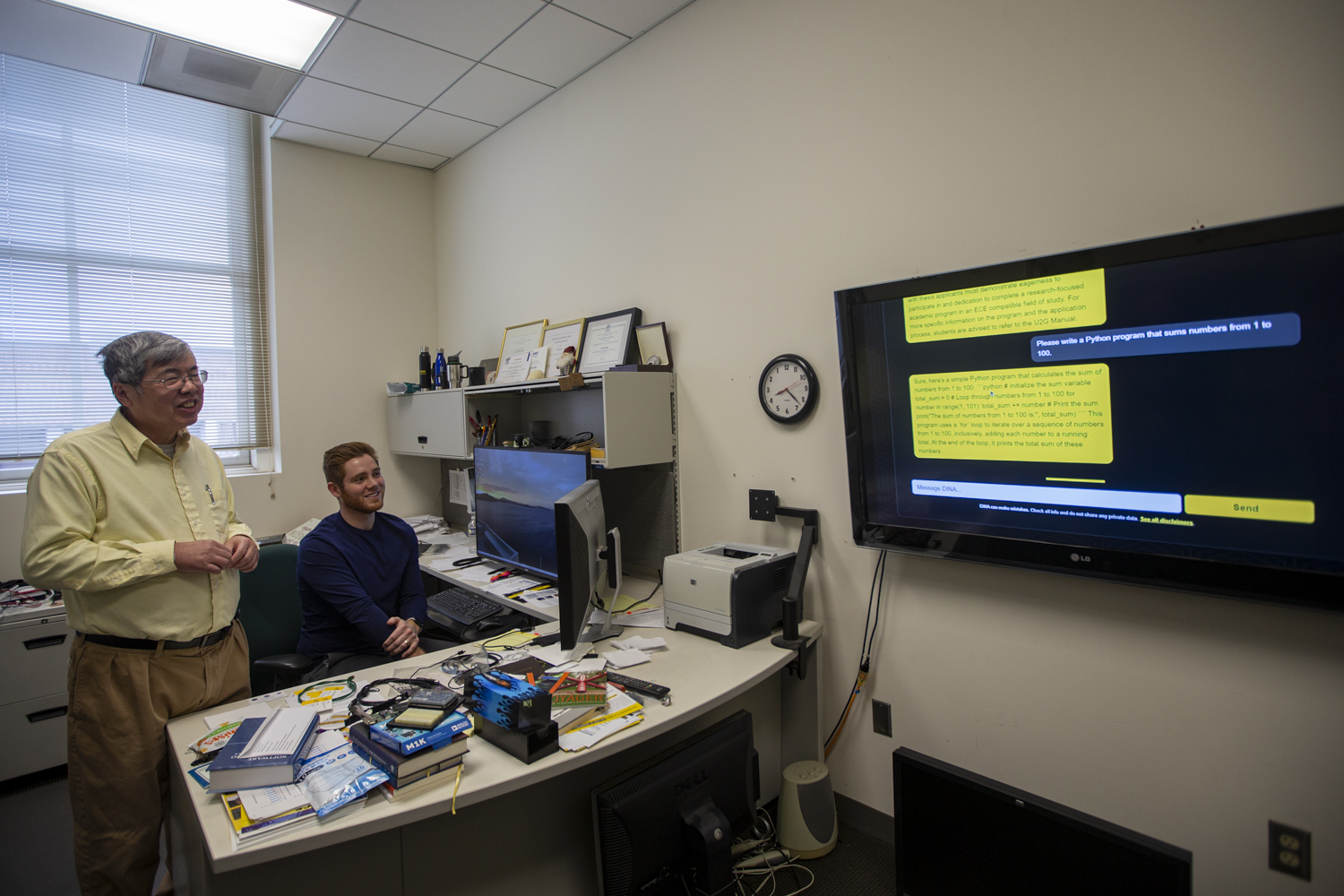- T3: Bron Eager's Newsletter
- Posts
- T3 Feb 19 2024
T3 Feb 19 2024
Hello AI Enthusiasts 👋
Welcome to the latest edition of T3: AI Tech, Tools & Trends in Higher Education.
In This Edition
AI News Updates – Curated selection of news articles on AI & Higher Education
AI Literature Review Tools – Some cool AI tools to check out before writing your next literature review.
Featured Book – AI 2041 Ten Visions For Our Future
Weekly AI News Updates
Catch up on the latest AI news in higher education with this selection of curated articles from around the globe.

Software Accuses Student of Cheating with AI, But Student Claims Innocence: Who's Telling the Truth?
The use of AI detection software to identify students who have cheated on essays is causing a dilemma for educators. As AI technology advances, students are finding more sophisticated ways to outsmart the detection systems and universities are responding by adopting more advanced AI tools.
However, these tools are not foolproof (with questionable reliability and validity!) and can sometimes misidentify essays as AI-generated when they are not. This has led to cases where students who are innocent of cheating are penalized, facing expulsion or other serious consequences.
While AI detection software is meant to catch plagiarism and ensure academic integrity, it has created a situation where students and educators are pitted against each other, with the veracity of the technology being called into question. To address this issue, educators are urged to focus on assessments that cannot be easily completed by AI, such as presentations, podcasts, and reflective writing. Additionally, incorporating unique content generated in the classroom could provide a way to assess students' critical thinking skills and originality.

The University of Iowa College of Engineering has developed an AI chatbot called DINA (Departmental Intelligent Neural Advisor) to answer academic advising questions for engineering students. Originally programmed as a throwaway example for an assignment, the chatbot was developed for official use after receiving positive feedback from professors.
DINA is designed to answer questions about undergraduate programs offered at the university and has access to ChatGPT-4 as well as all the information on the department's website. The chatbot aims to simplify the advising process and allow students to find answers to their questions more easily without needing to visit the advising office.
The program is currently limited to the electrical and computer engineering department, but there are plans to expand it to other colleges at the university in the future.

This article discusses the need for assessment redesign in response to the increasing integration of generative AI into daily software. It emphasizes the inability to create "AI-proof" take-home assessments and the importance of embracing AI as part of the assessment process. The article proposes a "two-lane" approach to assessments, which involves assuring learning in secure settings while adapting to the reality of AI in other settings, tailored to each discipline. It also highlights the opportunities to reflect on the human side of teaching and learning and help students become critical consumers and producers of AI-generated content. The article provides guidance on assessment tasks and interactive oral assessments in the context of AI, aiming to ensure that assessment changes have longevity even as AI progresses.

This article overviews some potential impacts of artificial intelligence (AI) on higher education. It explores various perspectives on the use of AI in academia, such as monitoring students' use of AI tools, appointing AI leaders, and leveraging AI to enhance personalized support for teachers and students. The article also highlights the potential benefits of AI in education, including personalized learning, task automation, smart content creation, and 24/7 assistance with conversational AI. Additionally, it addresses the concerns and potential downsides of integrating AI into higher education, emphasizing the need to approach its implementation thoughtfully and ethically. The discussion encompasses insights from academic institutions, researchers, and industry leaders, reflecting a comprehensive examination of the topic.

Indiana University (IU) has joined the U.S. AI Safety Institute Consortium, a new initiative from the United States Department of Commerce's National Institute of Standards and Technology, to advance the development and deployment of safe and trustworthy artificial intelligence (AI). The consortium aims to bring together various stakeholders, including AI creators, users, academics, government and industry researchers, and civil society organizations, to establish science-based guidelines and standards for AI measurement and policy. IU is joining over 200 other companies and organizations as part of the consortium. The university, known for its leadership in AI research, will contribute its expertise to address critical issues, such as developing best practices, creating secure testing environments, and addressing workforce shortages.
AI Literature Review Tools
Recently, I wrote about writing your next literature review with Petal’s AI tool, linked below.
For some additional exciting AI tools to help augment the literature review process, I suggest checking out Dr Andrew Stapleton’s recent video, where he introduces some of my favourite AI tools to finding all those papers you’ll need to write the review using Petal.
Featured Book: AI 2041, Ten Visions For Our Future
This week I’ve been reading AI 2041 by Kai-Fu Lee. It presents ten speculative short stories set in different cities around the world in the year 2041, each accompanied by an analysis of the AI technologies and their potential impacts.
The book explores how AI will shape various aspects of human life, such as work, education, healthcare, and relationships, over the next two decades. It delves into the potential benefits and risks of AI, including its role in revolutionizing medicine and education, creating new forms of communication and entertainment, and the ethical implications of AI technology. The stories and analysis aim to provide a realistic assessment of AI capabilities and their potential impacts, humanizing the discussion around the future of AI.
Worth adding to your AI bookshelf!
B.Store
Check out a curated selection of books that shaped my AI learning journey.
That’s a Wrap!
Thanks for your support.
I appreciate you reading this newsletter and sharing it with your friends.
Take care and chat soon,
Bron

